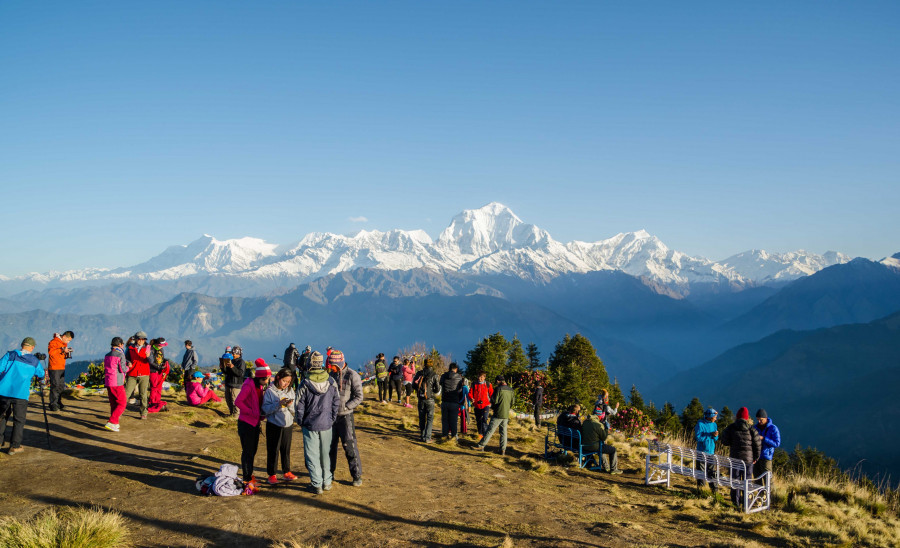Editorial
Revival of domestic tourism
The industry may have to rely on the domestic market for some time to come.
It has been almost two years since the cancellation of an event that might have attracted the highest inflow of tourists to Nepal from all corners of the world. Alas, it was not to be. Visit Nepal 2020 was touted to be a year to infuse new life, particularly into the tourism sector. Instead, no sooner had the year begun than news reports of the novel coronavirus started doing the rounds; and before long, governments worldwide imposed restrictions on travel. From the onset, it was pretty clear that the brunt of such measures would be felt the most by the tourism industry.
In the ensuing months, those involved directly in promoting tourism realised the scale of the impact. And the industry was left with the choice of either promoting local tourism or risking survival. Hotels and resorts have had to reorganise their menus and activities to suit the needs of local travellers. This has fortunately proven to be pretty successful in these difficult times. And the noteworthy point of consideration for all those in the tourism industry should be that due to the unpredictable nature of the ongoing situation, they may have to rely on the domestic market for some time to come.
It may be true to a certain extent that the charm of the mountains primarily attracts most tourists who fly in from beyond the continent, and as a result, indulge in trekking activities. Still, statistically speaking, of the 1.2 million international tourists that visited Nepal in 2019, about 65 percent cited pleasure as their purpose of visit, and a mere 16 percent said they came for adventure related activities, including trekking and mountaineering. It is not to say that adventure tourism is to be neglected, although it seems to fall in the category of people who operate on a tight budget. But a focused rejig to target the sector that travels for pleasure may pay rich dividends.
But that means investment in infrastructural development to the highest standard. Perhaps the new Gautam Buddha International Airport in Bhairahawa could aid in drawing pressure away from Kathmandu as a port of entry for those arriving by flight. Another sector that has been overlooked is the development of accessible tourism. While most hoteliers are aware of accessible or inclusive tourism as a concept, not much has been achieved in terms of investment in infrastructure and staff training to an acceptable level to ensure that the needs of disabled tourists aren’t ignored.
While the effects of the pandemic recede, more and more people from all corners of the country have been flocking to well-preserved nature reserves. Bardia National Park alone saw more than 10,000 tourists in February alone as thrill-seekers shook off the shackles of restrictive pandemic measures. This is the sort of payoff Nepal has been waiting for through a campaign of successfully protecting wildlife and biodiversity. And while we wait for the numbers to swell, perhaps some thought should go towards how we can cater effectively to the domestic market as well.



 17.12°C Kathmandu
17.12°C Kathmandu












%20(1).jpg&w=300&height=200)

